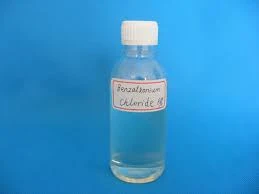Applications and Benefits of Anionic Polyacrylamide in Various Industries
The Versatile Applications of Anionic Polyacrylamide
Anionic polyacrylamide (APAM) is a synthetic polymer that has gained prominence across various industries due to its unique properties. This water-soluble polymer, characterized by its anionic nature, is primarily used in applications requiring the modulation of viscosity, retention of water, and flocculation of particles. In this article, we will delve into the diverse uses of anionic polyacrylamide and explore why it has become a vital component in many industrial processes.
1. Water Treatment
One of the most significant applications of anionic polyacrylamide is in the field of water treatment. It acts as a flocculant, helping to aggregate suspended particles in liquids, thereby facilitating their removal. In municipal wastewater treatment plants, APAM aids in the clarification of water by promoting the settling of solids. As a result, the liquid effluent is cleaner and safer for discharge into the environment. Its ability to enhance the performance of sedimentation processes also makes it valuable in industrial effluent treatment, ensuring compliance with environmental regulations.
2. Oil Recovery
Anionic polyacrylamide is extensively utilized in the oil industry, specifically in enhanced oil recovery (EOR) techniques. By improving the viscosity of injected water and reducing the interfacial tension between oil and water, APAM helps to mobilize trapped oil in reservoirs. This not only increases the efficiency of oil extraction but also maximizes yield and profitability. Furthermore, the use of APAM in EOR processes contributes to more environmentally friendly practices by minimizing the need for harsh chemicals.
3. Soil Stabilization
In construction and agricultural applications, anionic polyacrylamide is used for soil stabilization. It helps to improve soil structure, enhance water retention, and reduce erosion. When applied to sandy or eroded soil, APAM binds soil particles together, creating a stable matrix that can better withstand the forces of wind and water. This property is particularly beneficial in agricultural settings, where it aids in moisture retention, thereby promoting better crop yields. Moreover, in civil engineering projects, APAM can enhance the stability of embankments and slopes.
anionic polyacrylamide uses

The paper and pulp industry relies heavily on anionic polyacrylamide for various processes, including pulp preparation, dewatering, and drainage enhancement. By improving the retention of fibers and fillers during the paper-making process, APAM contributes to the production of higher-quality paper with improved physical properties. Additionally, its use in dewatering processes allows for more efficient water removal, leading to energy savings and increased production rates.
5. Mining Operations
Anionic polyacrylamide is also gaining traction in the mining industry, particularly in the flotation and concentration processes. It helps to enhance the separation of valuable minerals from waste materials by promoting agglomeration. By improving the efficiency of the flotation process, APAM helps to maximize the recovery of metal ores, thereby increasing the profitability of mining operations. Its role in the sedimentation of tailings can also aid in reducing the environmental impact of mining activities.
6. Other Applications
Beyond the aforementioned uses, anionic polyacrylamide finds application in various other fields. It is utilized in textiles for dyeing and finishing, in cosmetics for thickening and emulsification, and in pharmaceuticals as a binder in tablet formulations. Its versatility stems from its ability to modify the rheological properties of different systems, making it an invaluable additive.
Conclusion
In summary, anionic polyacrylamide is a dynamic polymer with a wide range of applications across numerous industries. Its roles in water treatment, oil recovery, soil stabilization, paper production, and mining operations underscore its importance in supporting sustainable practices while enhancing operational efficiency. As industries continue to evolve, the demand for innovative materials like anionic polyacrylamide will undoubtedly grow, reinforcing its status as a crucial component in modern industrial applications.
-
Water Treatment with Flocculant Water TreatmentNewsJun.12,2025
-
Polymaleic AnhydrideNewsJun.12,2025
-
Polyaspartic AcidNewsJun.12,2025
-
Enhance Industrial Processes with IsothiazolinonesNewsJun.12,2025
-
Enhance Industrial Processes with PBTCA SolutionsNewsJun.12,2025
-
Dodecyldimethylbenzylammonium Chloride SolutionsNewsJun.12,2025





